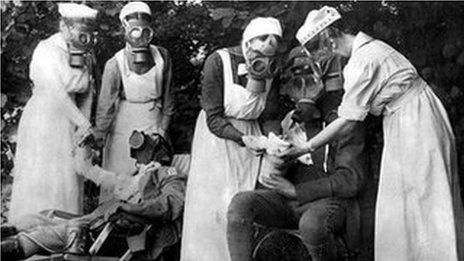Laura Gailey: Only woman honoured on Derry war memorial
- Published
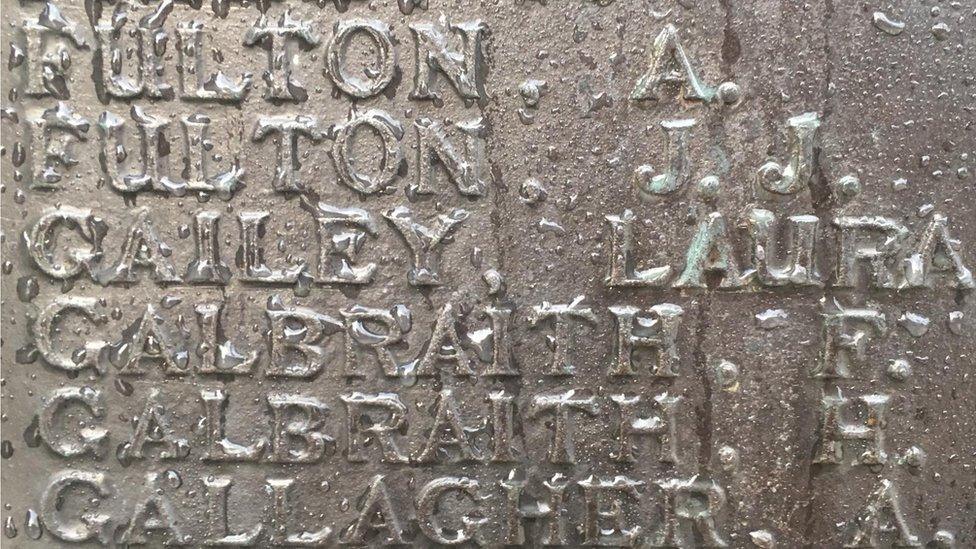
Laura Gailey is the only female name among the 756 fallen remembered on Derry's war memorial
"She heard the call of her King and country to do something in the crisis through which we as a nation are passing.
"When accepted she went right willingly to the work that fell to her lot, and faithfully she discharged the duties devolving upon her until sickness intervened and stayed her hand."
That is how Rev James Thompson, the Presbyterian minister of Great James Street Church in Londonderry, honoured 26-year-old Laura Marion Gailey, in March 1917.
The volunteer nurse had died just days before.
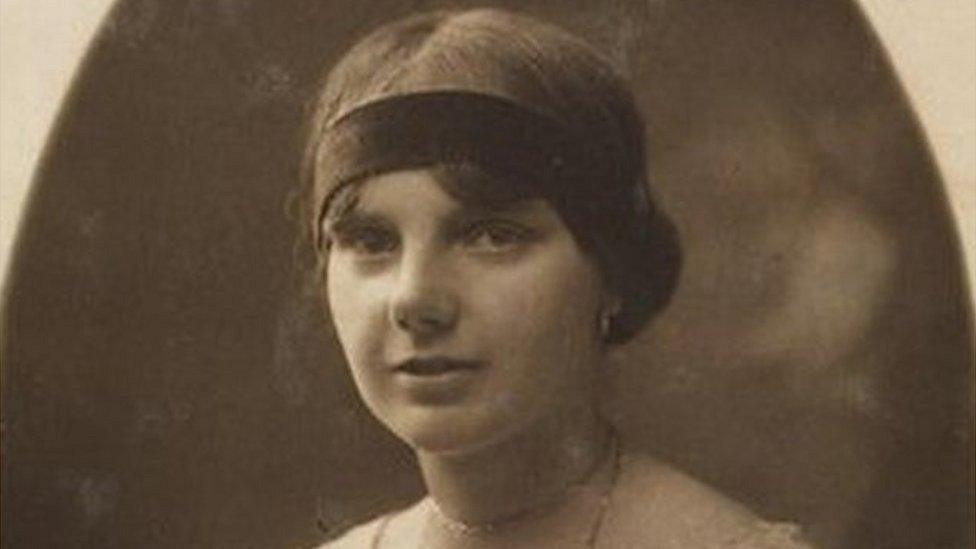
Laura Marion Gailey served with the Voluntary Aid Detachment (VAD)
She is the only woman among the 756 Great War fallen who are remembered on Derry's war memorial.
"It is very, very rare to for a woman to be remembered on a public memorial from that time," said a historian who has researched those honoured on the memorial.
It was unusual, too, for women to be buried with full military honours, Trevor Temple told BBC News NI.
Miss Gailey, from Bayview Terrace, was afforded that honour.
"Laura Gailey was one of the thousands of women who served as VADs, whose role was to care for the troops wounded on the battlefield," Trevor said.
Managed by the Red Cross, more than 90,000 volunteers - three quarters of whom were women - joined the Voluntary Aid Detachment (VAD) to work in auxiliary hospitals at home and overseas.
They had not been nurses in peacetime. Author Agatha Christie, campaigner Vera Brittain, Wimbledon champion Lottie Dod and suffragist Sophia Duleep Singh ranked among their number.
"The vast majority of First World War volunteers were ordinary women, and men, who cared for the wounded and sick, drove ambulances and acted as clerks, cooks and storekeepers," said Mehzebin Adam of the British Red Cross Heritage team.
Laura Gailey was "one such woman", she said.
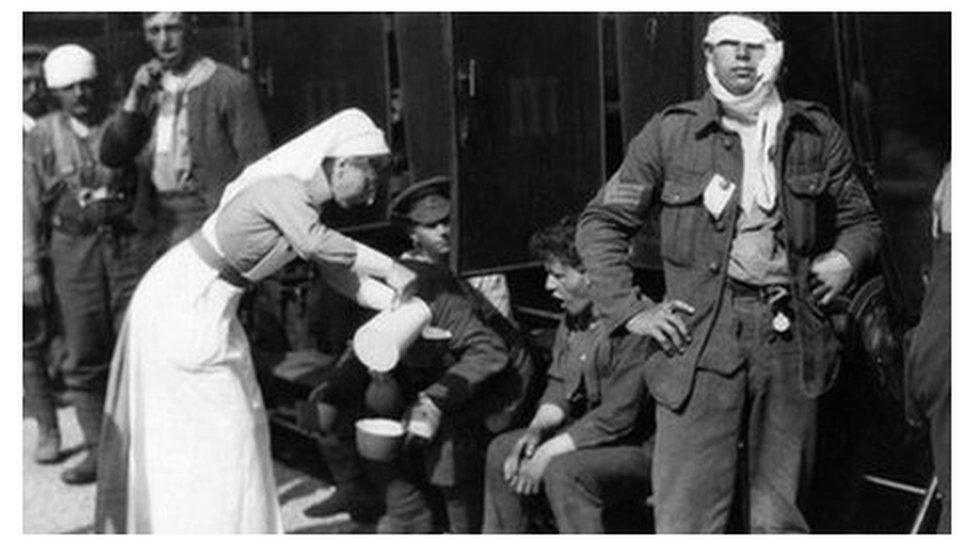
About 2,000 women from Ireland became voluntary aid detachments (VADs) during World War I
Born into a liberal unionist family in pre partition Ireland, Laura Gailey had attended Derry's Victoria High School.
She is mentioned by novelist Kathleen Coyle, a fellow pupil, in her autobiographical work, A Magical Realm,
Laura Gailey, writes Coyle of her school friend, "hardly ever walked at all".
"She skipped and danced and there was a brown velvet liveliness that made me think of goats and pansies somehow combined.
"The only discipline that was in her blood was that which went to music."
It is a description of childhood playfulness seemingly far removed from wartime nursing.
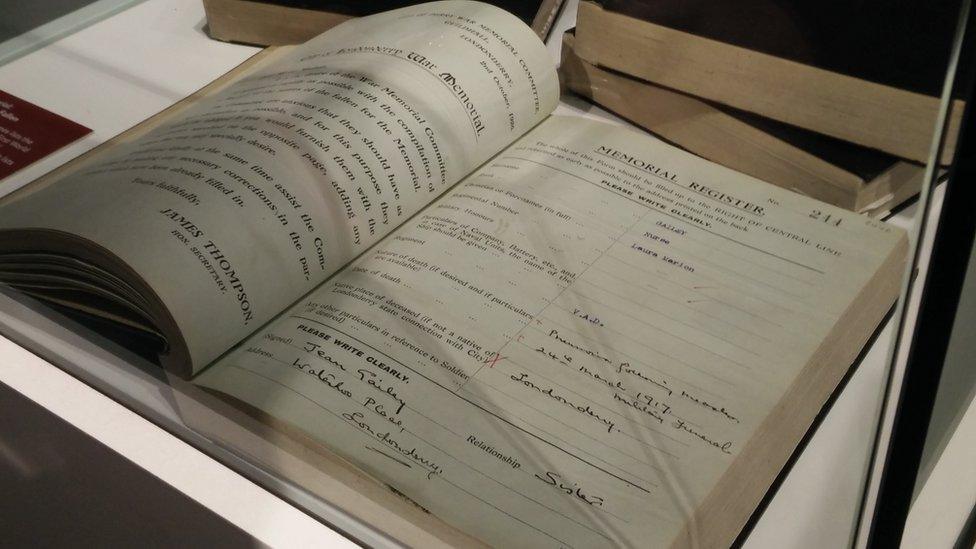
Laura Gailey's death, as recorded in the war memorial book currently on display in Derry's Tower Museum
Laura Gailey was one of about 2,000 VADs to come from Ireland.
Her service records show she volunteered in June 1915, joining the Donegal/Londonderry Commission of the St John's Ambulance Service.
She was deployed as a nurse to the First Western Military Hospital in Liverpool.
"Laura was well regarded for her gentle disposition and ready sympathy," added Ms Adam.
"And delivered this through dedicated, compassionate and skilled humanitarian service at a time of national crisis just as so many other women did."
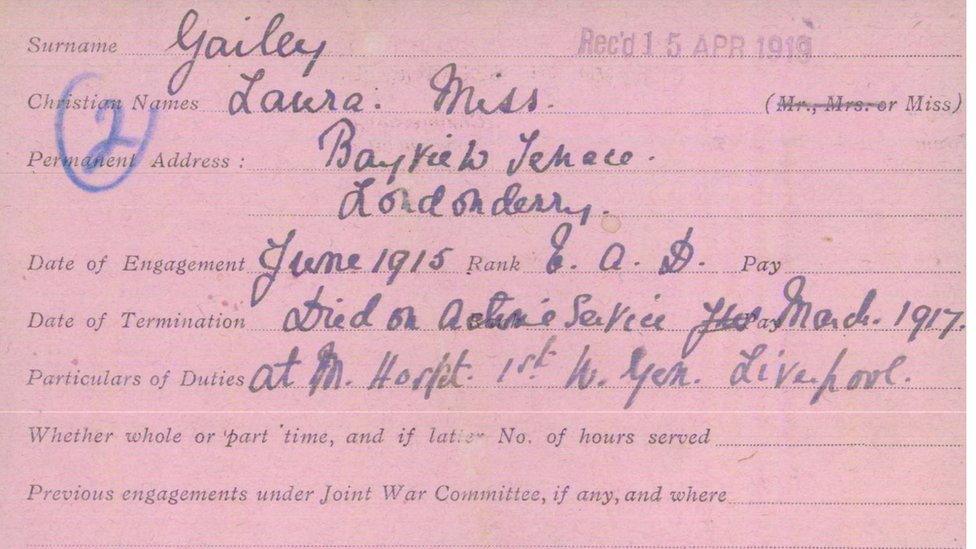
The Londonderry nurse died on active service on 24 March 2017
Often conditions in which VADs worked were tough, infection control was not fully understood.
Contracting a major illness was a commonplace among those caring for the wounded.
"On 24 March, 1917 and aged just 26 years after contracting measles followed by pneumonia, Laura sadly lost her life whilst on active service," said Ms Adam.
"Holding a rank equivalent to an officer, by King's Regulations she was buried with full military honours on 29 March with 200 nurses present to pay their respects."
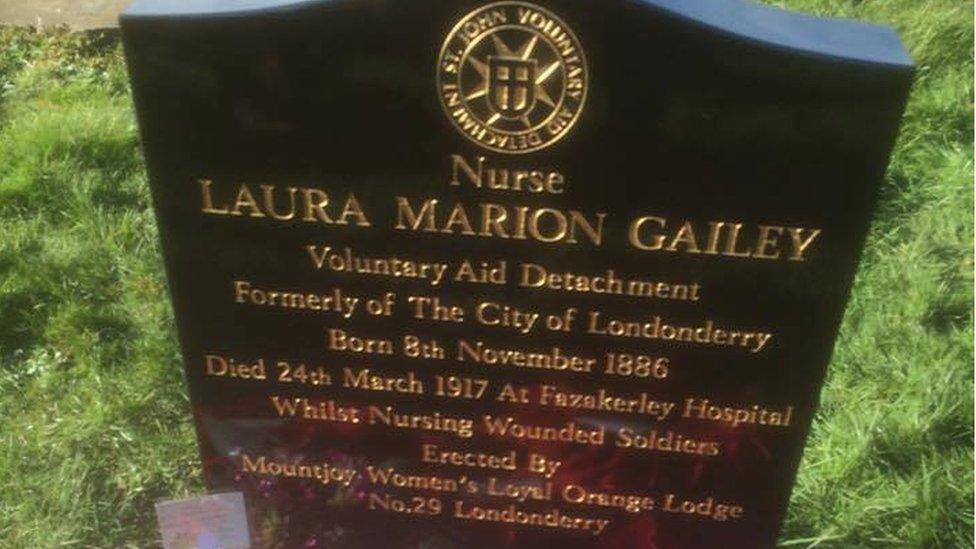
Miss Gailey's headstone was erected on 21 March 2017 at her final resting place in Liverpool
Although her rank afforded her a military burial, it was not for another 100 years that her grave would be marked with a headstone.
Purchased with funds raised by the ladies of the Mountjoy Orange Lodge in Londonderry, the headstone was erected on 21 March 2017 at her final resting place in Liverpool, just days from the centenary of Ms Gailey's death.
Her service, and that of the numerous women volunteers, Ms Adam said, "led to significant social change with women, driven by their war experiences, seeking greater opportunities in the workplace and securing the same voting rights as men in 1928."
- Published4 April 2014
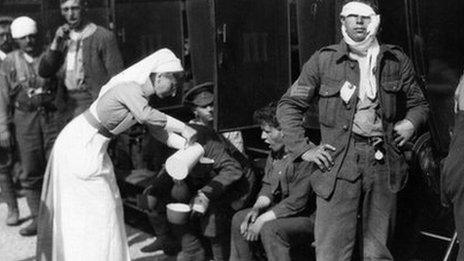
- Published2 April 2014
